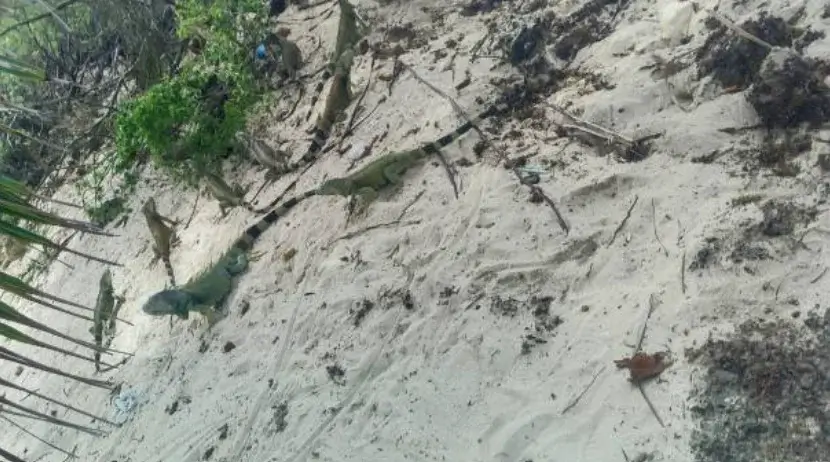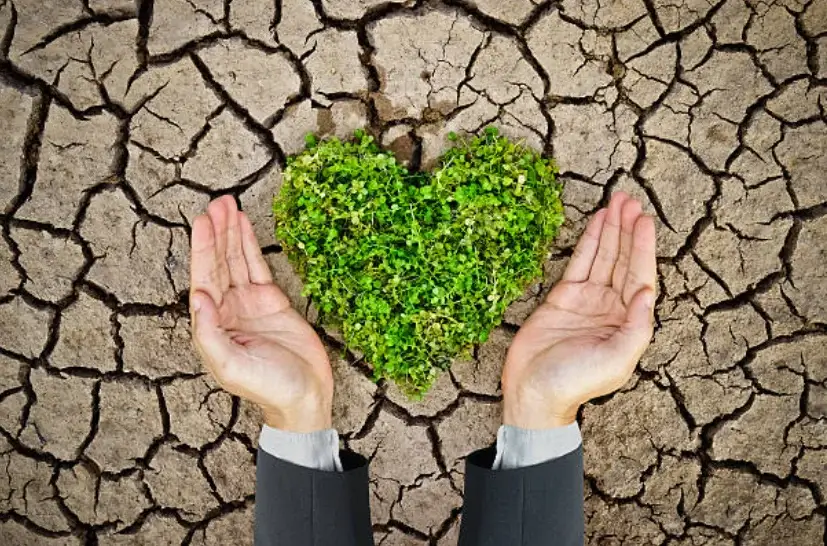Introduction: The natural environment is the biggest asset that could be bestowed upon living organisms in this world. It avails itself to support our breath, our drink, and our food. Nonetheless, humans have negatively impacted the environment and have spoiled the balance of ecosystems. We must learn when it is relevant to save of our natural environment and how we can do it. The following article is an attempt to establish an understanding of the health environment, its vulnerability, and what needs to be done to safeguard it for future generations.
The Importance of a Healthy Natural Environment
How Nature Supports Life on Earth?
Nature is considered to have extreme importance for sustaining life in the given world. For human needs, It delivers oxygen through plants, the climate, and resources. Forests, rivers, and oceans form a balanced natural ecosystem with headwaters that sustain various forms of life, including human beings.
They are all interconnected in a system of Life, opposed to the fact that food chains would fail. And the standard of living would decline. Most professionals are in agreement that the protection of natural resources is what promotes the well-being of all living organisms.
The Role of Biodiversity in Ecosystems:
Biodiversity can be defined as the magnitude of various species in the environment, which include plants, animals, and even microbes. It can be mentioned that all the spotted species have their roles in the system to ensure that each species balances the other.
For instance, bees help in pollinating plants to facilitate production from the plants. While predators check on their census from the prey. They will affect ecosystems, which will in turn result in doom and gloom, such as food shortages and diseases. It is, therefore, good to note that the conservation of this type of biodiversity is vital in the provision of life and to save the natural environment.
Major Threats to the Natural Environment

Deforestation and Habitat Loss:
Specifically, deforestation is the large-scale process of clearing forests to use the land for agriculture and also for settlements. This results in effects of aspects such as deforestation, which in turn displace the natural habitat of animals, some of which are on the verge of extinction.
They also play other roles, namely acting as sinks for carbon dioxide, thus reducing climate change. If the constituents are not removed, then greenhouse gases are released and cause additional warming of the planet. Such measures as the conservation of forests and afforestation are important in the conservation of biodiversity and the minimization of harmful effects.
Climate Change and Global Warming:
Climate change is a real issue brought about by the excessive release of greenhouse gases. Believed to be due to the activities of industries, automobiles, and the destruction of trees. Heatwaves result in unstable climates, the melting of the glaciers, and acts of devastation such as storms and fire outbreaks.
Thus, the impacts of climate change have been observed to affect agriculture, water, and human health. Therefore, it is a great strategy to decrease such pollutants as carbon and utilize clean energy to mitigate climate change.
Pollution and Its Devastating Effects:
Pollution is air-borne, water-borne, and soil-borne, causing harm to human beings as well as animals. Industrial waste discharge, plastic waste, and chemical pollution pollute the natural sources of water. One of the effects of pollution is that it leads to respiratory diseases from the smoke produced by vehicles and industries. While water pollution results in the death of sea organisms.
Overpopulation and Resource Depletion:
The expected rise in population also exerts pressure on available resources in the natural environment. A large population causes increased consumption rates of food, water, and energy in society. Which means that the available resources will be depleted. The effects of overpopulation include overfishing, overuse of water resources, and deforestation.
The Role of Sustainable Practices
Renewable Energy Solutions:
Conversion to green products reduces the use of fossil fuels, like solar, wind, and hydro power sources. These sources of energy are non-polluting and thus are very helpful in reducing the effects of climate change and help to save the natural environment. There are private and public financiers that can participate in the funding of renewable energy systems and the future with fewer emissions.
Reducing Waste and Promoting Recycling:
This is because it reduces the amount of waste that is produced, hence reducing the wastage of natural resources. So, if these utilized products like paper, glass, and plastic are recycled, landfills will be minimized and pollution as well. In a broad perspective, recycling activity as well as the use of biodegradable material may go a long way in influencing the conservation of the environment.
Sustainable Agriculture and Organic Farming:
This is because traditional farming adopts the use of fertilizers, especially chemical fertilizers, that pollute the soil and water sources. This involves practicing techniques such as crop rotation, recycling, and the use of ecological farming. Such methods help in enhancing the fertility of the soil, preventing pollution. And the conservation of biodiversity, for future growth and production of food.
Individual Actions to Save the Natural Environment

Reducing Carbon Footprint:
A carbon footprint, therefore, refers to the number of greenhouse gases that used in their daily life. They can use energy-conserving devices, avoid the use of cars, and instead opt for other means of transport, such as public transport. They include using footballs that are environmentally friendly as well as the use of LED bulbs and efficient use of water.
The Power of Eco-Friendly Choices:
In conclusion, one can accept eco-friendly bags, minimise the use of plastics, and buy from organisations that are environmentally friendly to conserve the environment. Specifically, one can avoid or recycle products with excessive use of packaging and go for environmentally friendly products.
Water Conservation Strategies:
Water is scarce in supply, and therefore it is important to do all that is possible to use it wisely in order to avoid exhausting it. Measures such as repairing damages that cause leaks, washing, and using equipment that does not waste water can assist in saving clean water.
The Importance of Environmental Education:
Increasing awareness through school and media, NGOs and other organizations, state and private media, Internet sources, and schools can go a long way by making people aware of such heinous crimes and how they can be prevented.
Education is an essential CSR in the improvement of the environment. Education is well placed in schools in a process of extending knowledge on environmental conservation and management. Media campaigns, documentaries, Facebook, Twitter, and any social media group also play an important role of awareness of such diseases and forcing people to go for treatment.
The Role of Governments and Policies:
The subject of laws and policies mostly lies under the responsibility of the governments when it comes to matters concerning the environment. Pollution control has been aided through the regulation of emissions of industries, restriction of deforestation, as well as regulation of the management of industrial wastes. Policies for favourable changes toward renewable energy and energy conservation efforts are effective to save the natural environment and its sustainability.
Community Initiatives for Environmental Protection
Tree Plantation and Reforestation Projects:
Tree planting activities aim at extending the coverage of the natural forests, mitigating greenhouse gases, and supporting wildlife programs. Such programs suggest the involvement of the communities in tree planting to enhance the quality of air and mitigate climate change.
Local Cleanup Drives and Waste Management:
Community cleaning exercises are important activities that help to prevent littering, especially on natural terrains. Compost and recycling programs ensure proper disposal of waste, hence less impact on the environment.
The Future of Our Planet: What Lies Ahead?
Innovations in Green Technology:
Advancements in green technology offer solutions to environmental problems. Technological advances such as electric vehicles, biodegradable products, and materials in construction minimize pollution and emission of greenhouse gases. The implementation of green technologies will allow for the growth of a cleaner form of technology in the future.
The Need for Global Collaboration:
The conservation of the environment should be done worldwide. There is a need for cooperation and coordination in countries towards emissions control and environmental conservation. It is thus only through the international agreements and global sustainable development goals that the world over can provide a united front insofar as protection of the environment is concerned.
Conclusion:
A healthy natural environment refers to the degree of health of the natural environment, and is crucial for life. We have done a lot of harm to our environment through different activities, but through embracing sustainable human practices.
As well as education of the sustainable development goals in the community, our natural environment can save and or indeed restored. It is the desire of every single person to protect the different natural resources in the world, and this can be done in small ways.
FAQs:
1. What is the importance of biodiversity to the environment?
A: It plays a vital role in the existence of every living being since it is involved in food chains, pollination, and climate regulation.
2. What measures should be taken by people to minimize environmental pollution?
A: The disadvantages of pollution include unfavorable impacts on the health of the people, the environment, and resources, and hence the need for the protection of the earth through the purchase of drinking water, products that are eco-friendly, conservation of electrical energy, and reduction in the use of polythene.
3. This post describes the benefits of renewable energy for a world that is gradually shifting from the conventional means of energy production.
A: Renewable energy possesses the quality of emitting less carbon dioxide, which allows for pollution control, unlike fossil energy sources.
4. What effects of climate change have on wildlife?
A: High temperature and habitat loss have caused some species to move from the areas they initially inhabited or face extinction.


